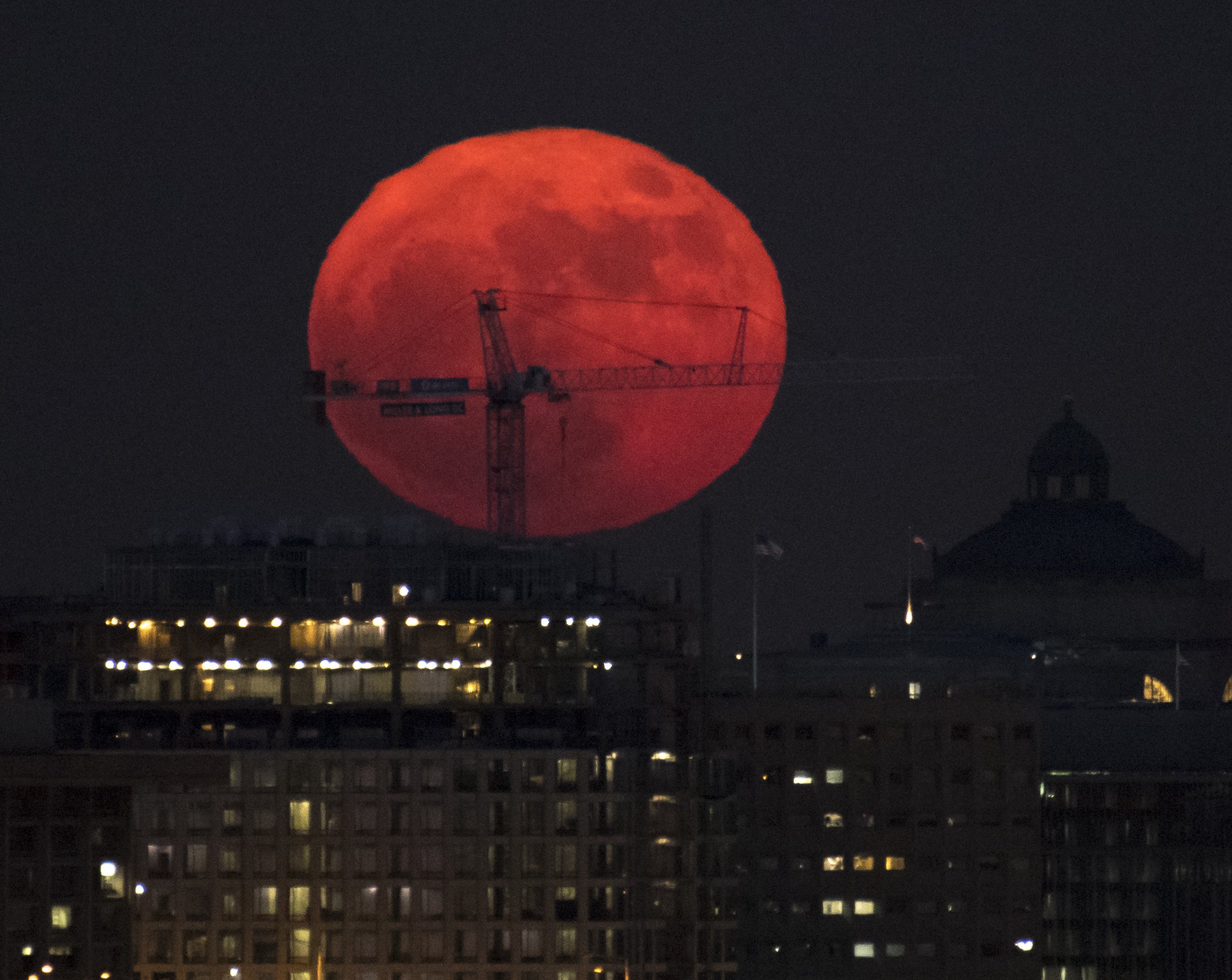
In the early hours of January 21, there will be a total lunar eclipse, also known as a blood moon, which coincides with a supermoon—making it a super blood moon.
Anna Ross, an astronomer at the Royal Observatory Greenwich, London, tells Newsweek all about the event.
What is a total lunar eclipse and how rare is it?
A total lunar eclipse occurs when the moon passes directly through the Earth's full shadow (umbra). Due to the moon having an irregular orbit, this does not happen every time it is at the opposite side of the Earth to the sun, but only when the angles and distances are just right—otherwise we see either a full moon or a partial or penumbral eclipse. Lunar eclipses occur two to five times per year, but they are mostly partial or penumbral, so the moon only falls partly into the Earth's shadow. Total lunar eclipses are visible somewhere on Earth roughly once per year, and from a set location, every other year.
Why does the moon appear to turn red during a total lunar eclipse?
As the light from the sun hits the Earth, most of it is just directly blocked to create a shadow. However, some light is refracted through the Earth's atmosphere and bent around to still hit the moon's surface. When light is passed through a glass prism it is split into a rainbow of colors depending on the angle it has been bent by. Light from the sun passing through our atmosphere does the same thing, so when the sun is high in the sky we see blue, when it is lower (or the light is passing through at a shallower angle) we see the reds of sunset and sunrise. When the light is passing through to the moon during an eclipse, it is a similar shallow angle so we see reds too. The intensity of the red color depends on the amount of dust in the atmosphere, so not every sunset or sunrise is red, and neither is every lunar eclipse.
What is the best way to see a total lunar eclipse?
Unlike a solar eclipse, lunar eclipses are safe to view directly with your eyes. In some ways it is actually better to view with the naked eye than a telescope as that way the whole event can be seen, rather than looking at a smaller patch of the lunar surface in close detail.
Is it unusual for a total lunar eclipse to coincide with a supermoon?
Yes—of the 87 total lunar eclipses that will occur in the 21st century, only 28 will coincide with supermoons.
What will the moon look like during the total solar eclipse/supermoon? How long will it last?
The events of this January's lunar eclipse will begin in the early hours of the 21st. At 2:36 a.m., high in the southwest of the sky, the moon will start to darken as it starts to enter an area of partial shadow produced by the Earth (penumbra). At 3:33 a.m., the full shadow of the Earth (umbra) will start pass across the lunar surface, seeming like its changing phase very quickly. At 4:41 a.m., high in the west of the sky, the full eclipse will begin as the moon will be fully covered by the full shadow of the Earth and turn red. By 5:43 a.m. the full eclipse will end as the moon loses its red color and begins to move out of the full shadow of the Earth and by 6:50 a.m. it will appear full again. By 7:48 a.m., the moon will be back to its usual brightness and the eclipse will be officially over.
*Viewing times for London. For viewers in EST, the total lunar eclipse will begin at 11:41 p.m. January 20 and will end at 12:53 a.m.
When will these two events coincide again?
The next total lunar eclipse and supermoon will occur February 11-12, 2036.
Does this event have any effect on Earth, e.g., tides?
During lunar eclipses, the sun and moon are at opposite sides of the Earth to each other, putting the three bodies in the same orientation as during a full moon. When the sun and moon are in line, their gravitational pulls on our seas are combined. This causes higher high tides and lower low tides, also known as Spring Tides. Additionally, during a supermoon, the moon is at perigee (or closest approach to the Earth) causing its gravitational pull to be stronger and our tides to be a little more extreme (by a couple of inches). These are known as Perigean Spring Tides and occur around three or four times each year.
Uncommon Knowledge
Newsweek is committed to challenging conventional wisdom and finding connections in the search for common ground.
Newsweek is committed to challenging conventional wisdom and finding connections in the search for common ground.
About the writer
Hannah Osborne is Nesweek's Science Editor, based in London, UK. Hannah joined Newsweek in 2017 from IBTimes UK. She is ... Read more
To read how Newsweek uses AI as a newsroom tool, Click here.








